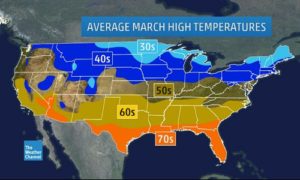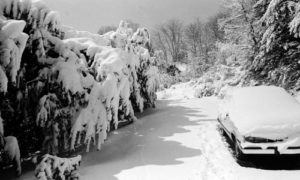
Snow day at WCU. Photo by WCU Campus Dining
If you have spent any time outdoors within the past week you’ll have noticed the strange change in temperature. Going from a high of 70 degrees last Thursday to extreme weather conditions this coming week has many Cullowhee residents scratching their heads.
“The weather in WNC changes more than I change my underwear,” said Sabrina Curtis, WCU student.
But according to Lauren Vinsin, a meteorologist at the National Weather Service in Greer, South Carolina, specializing in weather trends in the south east, this weather isn’t completely uncommon for March.
“During the beginning of springtime we see warm weather battling with cold weather, and it will usually result in extreme weather,” explained Vinsin.
The Weather Channel website has an explanation for why March brings with it such weird weather.
“The March jet stream is still powerful, owing to the temperature difference between more southern and northern latitudes. With lingering arctic air plunging out of Canada and increasingly warm, moist air from the Gulf of Mexico, the stage is set for powerful snowstorms, both hooking out of the Rockies into the Plains, and tracking up the East Coast.”

March Average Highs. Photo from the Weather Channel Website.
Some of the most notorious snow storms that we have seen in the United States have taken place in March, such as our own blizzard of ’93.
The infamous blizzard, also known as the Storm of the Century, was a large cyclonic storm that formed over the Gulf of Mexico on March 12, 1993. During the storm, some areas of WNC accumulated between two and four feet of snow, according to the Sylva Herald. This was the worst snow storm that Cullowhee had ever seen.

Snow Accumulation in Sylva during the Blizzard of 1993. Photo from the Sylva Herald.
Whenever something unusual happens with the weather, most automatically point to global warming. But global warming might not be at fault.
“It is impossible to attribute one weather moment to global warming,” said Vinsin. “You have to look long term before making a conclusion.”
The weather will continue to fluctuate over the next week, resulting in more snow and freezing temperatures. The temperature will be back up in the 60’s and 70’s next week, but then again dropping as we head into April.
So, grab your tank top and your sleds, because this one is going to be a bumpy ride.


